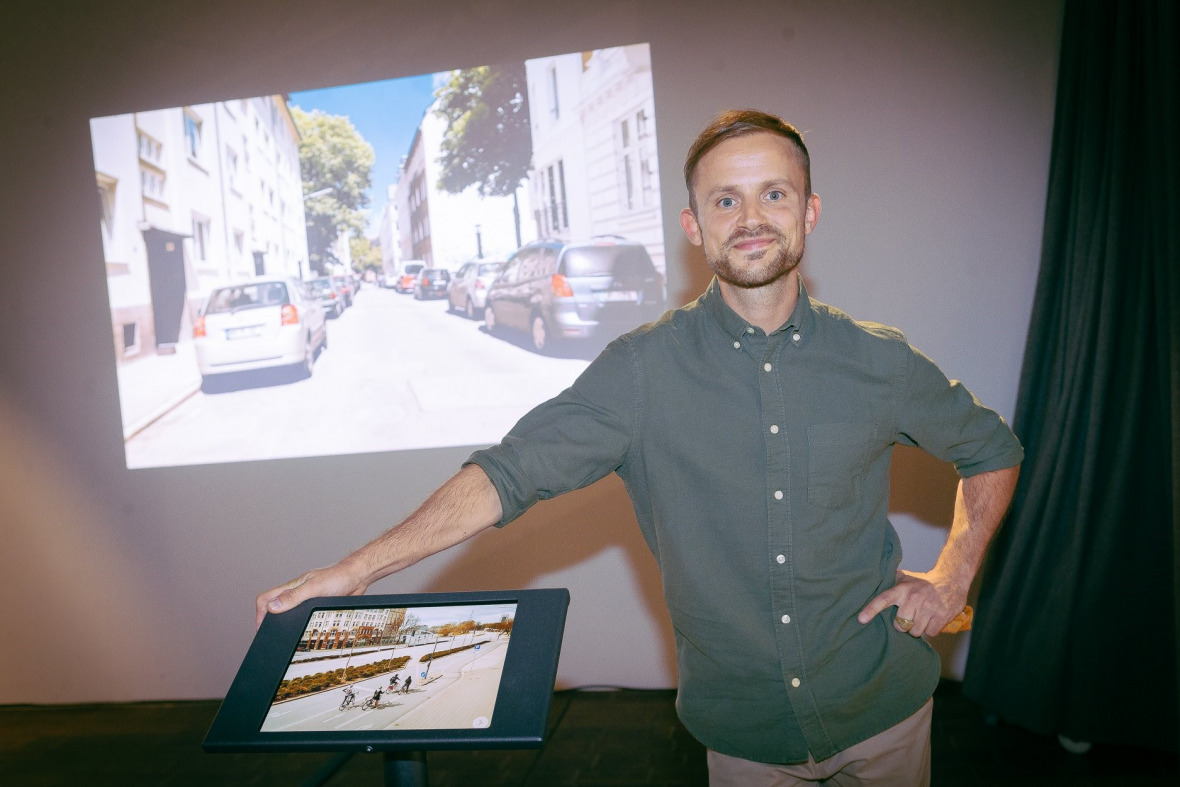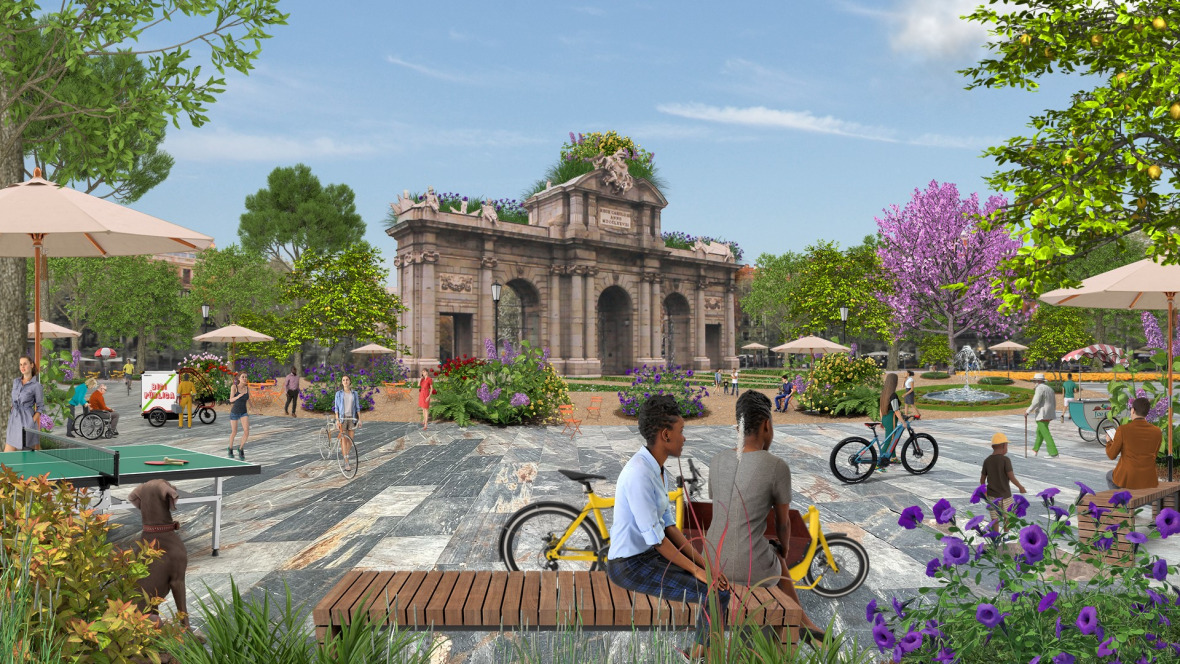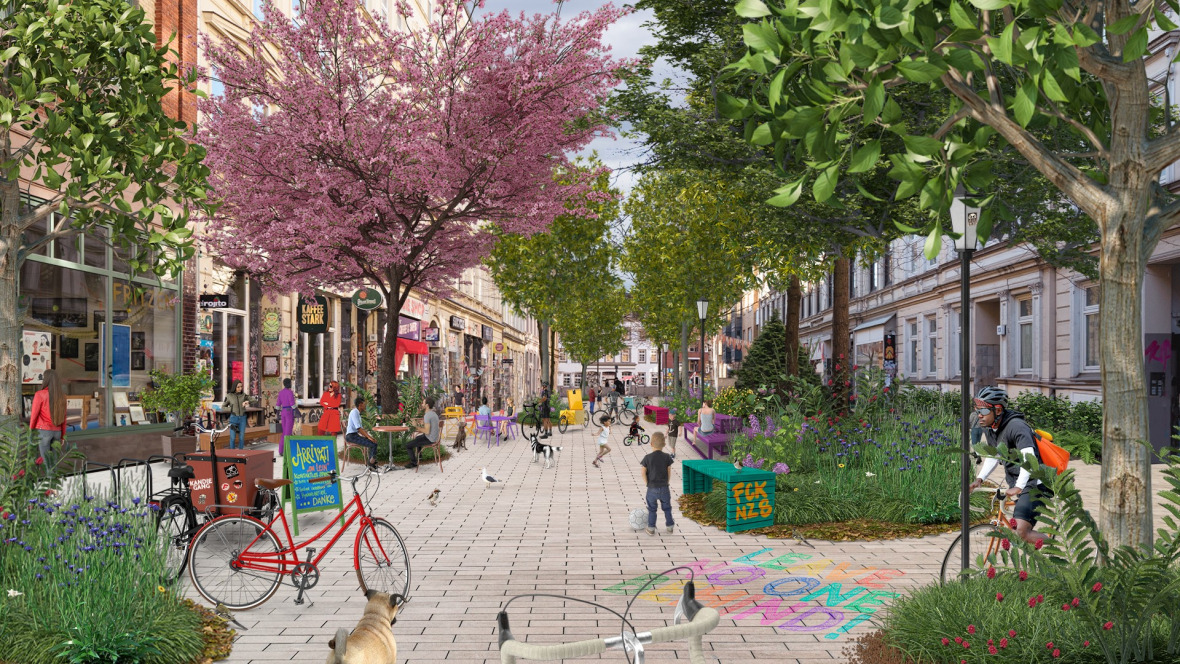Re-imagining the future through visual utopias
01.12.2022

“We have to imagine a society before we build it”, Justine Norton Kertson says, “And when it comes to adapting and solving the climate crisis, defeating fossil fuel empires, and creating a relationship of harmony rather than conflict between humanity, technology and nature; then we have to move from the imaginary to the real, from theoretical to practical”.
There is no doubt that we have a long road ahead to build a carbon-neutral environment and create sustainable ways of living in the near future. But more importantly, at least from my point of view, we need to decide on what we would like to change exactly and what kind of a world we want to establish in the first place. Otherwise, we will not be able to take life-changing steps that will have long-lasting results.
We know that brilliant ideas come out of our imagination before they are realised. This is where utopias also come in; by providing us with possibilities for an ecologically responsible future, and helping us discover the possibilities in front of us. I strongly believe that utopias set a positive focus for the future and give us a purpose; a target that should be achieved for the benefit of our society, our environment and the ecosystem. That’s why they have the potential to affect our decisions while guiding our actions. As Argentinian ambassador Raul A. Estrada-Oyuela once said in the second IPCC meeting: “Utopia is needed to advance political ideals”, even though these ideals seem inaccessible and unachievable for many people. Utopias’ critical stance towards today’s conditions can encourage us to monitor what we have done so far and what we can do to adapt ourselves accordingly to create a world that utopians envision for us.
The term “utopia” was first used by Thomas Moore in 1516 to describe an imaginary society, established on an island, where people share a common culture and lifestyle. The word was actually coined from Ancient Greek, and it means “nowhere” or "no place" and it is very much similar to eu-topos; another Greek word meaning “the good place''. Throughout the years, there have been many discussions of the word’s meaning and implications but it is certain that Moore‘s ideas have inspired many generations and continue to do so.
In my opinion, utopias can effectively contribute to today’s discussions on environmental or urban-development related matters with their glorious images, challenging visions and completely inspiring perspectives since they create a magical virtual world that we all may want to have and provide a sense of purpose that could be realised to reach our aims. They invite us to a different universe and enhance our horizons, enabling us to think outside of our borders, and to push our limits about what we can change and how we can achieve our best with the options we have in our hands against climate change.
Jan Kamensky, a visual and communication designer from Hamburg, is one of the Utopians, who depicts a future that is environment-friendly. This is a world where nature is protected and cars are replaced by bicycles; a world where air pollution and traffic congestion do not exist anymore.

“Moore invited us, his readers on a journey”,Kamensky says, and “I am inviting the viewers on a journey, to my Utopia, and then they might have the possibility of looking around and seeing possibilities”. He thinks that utopias are powerful tools that could change people’s mindsets, as they hold up a mirror to society and enable people to reflect on their own actions.
Kamensky calls himself a visual utopian, and digital gardener (as he believes that he plants trees in our minds). At the outbreak of the pandemic, he began to create animations about future utopias and he has recreated famous cities and streets all around the world in short videos. He was inspired to this work by the experience of deserted inner-city areas during the lockdowns.
“I had more concentration and inspiration from literature during the pandemics”, he explains, “And I started an experiment by myself. During the lockdown, the streets were so empty and there were so few cars on the roads. This experience was my first inspiration. And then I wanted to see for myself what would happen if we erased every car and had even more space. So this was a personal experiment for myself before I thought of publishing it, but I was amazed by the whole space we could win by just taking cars out of our streets.”


When I ask him why he prefers to draw utopias, despite the fact that dystopias get more attention in climate fiction in today’s popular culture, he replies, “I think utopias and dystopias are connected. They are both dependent. I decided to go to Utopia; to the land where we want to be, because I think it's important to provoke positive emotions. There's already so much negativity around us, and actually there are reasons to be negative as well. But I don't want us to be overwhelmed by anxiety, fear or anger. Those emotions were provoked by dystopian images. When we watch or read about dystopias, we go on a journey on the dark side. After we come back, it may give us a bad feeling.”
It is true that we are most of the time told that a dark future is waiting on the front door unless we take immediate action regarding the climate crisis. As Kamensky notes, this idea invokes panic and fear; and that is indeed the aim: to make people realise that time passes quickly and they have to do something before it is too late. However, considered from another perspective, we can see that these emotions might lead us “…only to hopelessness, listlessness and inaction. And the irony is that the root of panic is the idea of losing something we love”, according to utopian writer Sarah Lewis.
So, instead of emphasising what we will lose, we might show what we will gain at the end.
I believe that we need both negative and positive future scenarios, and as Kamensky also mentioned, these stories are not independent from each other. On the contrary, they are complementary and serve the same purpose from different angles by enabling us to discover multiple realities in our lives.
During our interview, Kamensky especially emphasised that his utopias were not intended to be overly positive. “Then we might be blinded by that too much”, he said, `We must really find a very calm way of seeing things. I want to underline that it's so important to stay calm and friendly, and to see that actually there is no other side. We are all in one. So we have to walk together.”
And I couldn’t agree more.
As I mentioned in my previous article, I strongly believe that art has the transformative and consolidative power that can evoke a shared vision to remind us of where we are now and what we can do to fight against environmental problems – together and at this point in history.
With his images, Kamensky really hopes that people will return from his journey with a clearer view. He thinks that his art, and the experience of seeing how different cities could be, might create a new consciousness. As he explains this, he quotes Buddhist monk Thich Nhat Hanh, who said, “Once there is seeing, there must be acting.” And Kamensky thinks that when we see deeply, we will feel motivated to take action.
For him, this is the real Utopia.
See the website: visualutopias.com
Watch the animations on Vimeo: vimeo.com/jankamensky
Welcome to Lütt’opia – Space for Transformation: luettopia.com